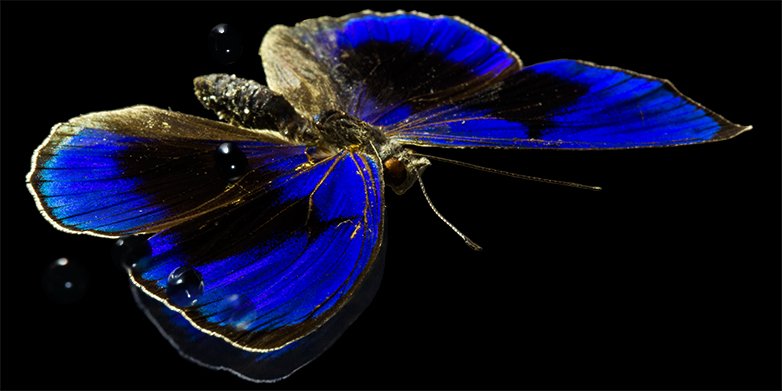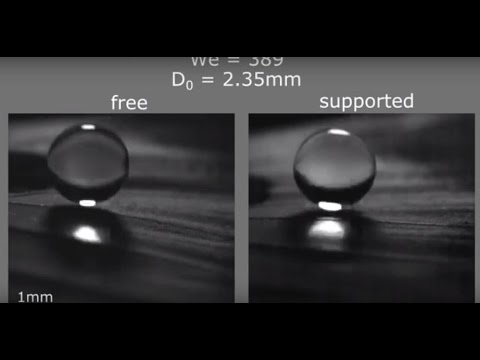Flexibility increases water resistance
Butterfly wings are a prime example of how flexible and elastic materials can be extremely water-repellent. The relationship between elasticity and water resistance has now been described for the first time by researchers at ETH Zurich. The new finding could help to improve water-repellent textiles for use in tents or clothing.

You can increase the water resistance of surfaces by making them flexible and elastic, as demonstrated by researchers led by ETH Zurich Professor Dimos Poulikakos. The scientists compared extremely water-repellent (superhydrophobic) films on a solid substrate with films that were suspended to allow their flexibility to take effect. The suspended films with an optimised thickness and elasticity were up to 1.6 times more water-repellent than the same films mounted on a substrate.
Tom Schutzius, senior scientist in Poulikakos’s group, describes the advantages of flexible materials using the example of a water-repellent material in the rain: “Raindrops collide with the surface. If the material is elastic, the impact is cushioned and the droplet bounces back slightly. If it isn’t flexible, the impact is harder, so the surface is more likely to get wet.”
Nanoparticles, chemistry and elasticity
Experts refer to surfaces as superhydrophobic if water droplets form beads on them and roll off even when the surface is inclined only slightly. For their experiments, the ETH researchers produced their own superhydrophobic films by coating elastic spring steel plates or polyethylene films with nanoparticles and a water-repellent chemical compound. The nanoparticles make the surface rougher, reducing the contact area between the surface and water droplets. This can be compared to a person lying on a bed of nails, where it is only in contact with a small area. Similarly, water droplets adhere less strongly to a surface that resembles a bed of nails.
In addition, the scientists tested the flexibility effect on butterfly wings (see video below). “In nature, there are many surfaces whose superhydrophobicity is complemented by flexibility. This is the case in the wings of insects and some birds, as well as the leaves of certain plants,” says ETH doctoral student Thomas Vasileiou, lead author of the study, which was published in the journal PNAS.
The researchers not only determined in detail how a material’s lightness and elasticity are related to its water resistance; they also described general rules that may allow the flexibility effect to be used in the development of extremely water-repellent materials. In the future, this could be used to further improve the waterproofing of various materials; for example, elastic and stiff fibres could be woven into tent fabric and waterproof clothing to optimise their elasticity.

Reference
Vasileiou T, Gerber J, Prautzsch J, Schutzius TM, Poulikakos D: Superhydrophobicity enhancement through substrate flexibility. PNAS, 9 November 2016, doi: external page 10.1073/pnas.1611631113
Comments
No comments yet